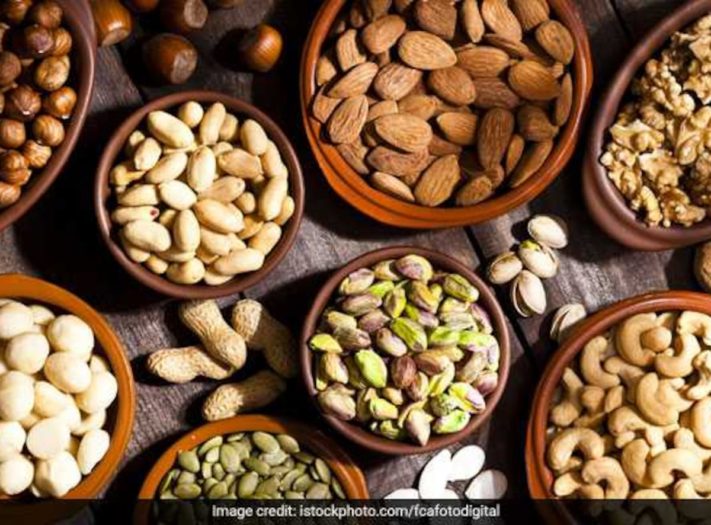Nuts can make a simple snack. Most are safe to eat raw, and they are available in many grocery stores. People with diabetes should avoid salted varieties.
The following are the best nuts for people with diabetes:
Almonds
Almonds have a range of benefits for individuals with this condition.
A study from 2011 found that incorporating almonds into the diets of participants with type 2 diabetes for 12 weeks positively affected blood sugar and reduced the risk of heart disease.
Another study, from 2017, looked into the effect of daily almond consumption over 24 weeks in people with type 2 diabetes. The authors found that incorporating almonds into the diet helped control blood sugar levels and decrease the risk of heart disease.
Almonds reduce the body’s levels of low-density lipoprotein (LDL) cholesterol, which can block arteries. They increase the amount of high-density lipoprotein (HDL) cholesterol, which helps remove LDL cholesterol from the arteries. This is part of the reason why almonds reduce the risk of heart disease.
Walnuts
Walnuts are high in calories. However, a study in BMJ Open Diabetes Research & Care found that they do not have a major impact on body weight or composition.
The researchers assigned 112 participants at risk of diabetes to either a low-calorie diet or a diet rich in walnuts for 6 months.
They found that the walnut-enriched diet was able to improve the ratio of HDL to LDL cholesterol without negatively affecting body composition.
In a study from 2018, researchers investigated the association between walnut consumption and diabetes risk in 34,121 people.
They found that people who had eaten walnuts in the past 24 hours were half as likely to have diabetes, compared with people who had eaten no nuts in this period.
Cashews
Cashews can help improve the ratio of HDL to LDL cholesterol and lower the risk of heart disease.
In one of the studies, researchers gave 300 participants with type 2 diabetes either a cashew-enriched diet or a typical diabetes diet.
Those on the cashew-enriched diet had lower blood pressure and higher levels of HDL cholesterol after 12 weeks. The cashews also had no negative impact on blood glucose levels or weight.
Pistachios
Pistachios are relatively energy-dense, but they contain healthful amounts of fiber and beneficial fats.
As part of a study, researchers gave either a pistachio-enriched or a regular diet to participants with type 2 diabetes over 4 weeks.
They found that the ratio of HDL to LDL cholesterol was significantly better in the pistachio group, in comparison with the regular diet group. Those on the pistachio diet also had lower triglyceride levels, which indicate better heart health.
Peanuts
Peanuts are rich in protein and fiber. They are a good source of protein and fiber. They can help with weight loss and may reduce the risk of heart disease.
One study looked at the effect of peanuts on the diets of females with obesity who were at risk of developing type 2 diabetes.
The researchers found that adding peanuts to cereal helped control blood sugar levels and appetite in participants. This can help with weight loss, which has a significant impact on diabetes risk.
As a diverse type of food, nuts can be easy to incorporate into a healthful diet. They can provide a good source of protein and beneficial fats for people with diabetes.
To avoid excess calorie intake, consider a serving size to be a small handful or one-fourth of a cup.
